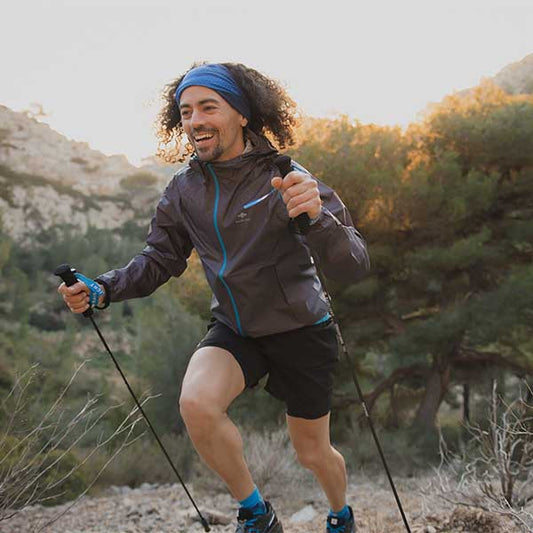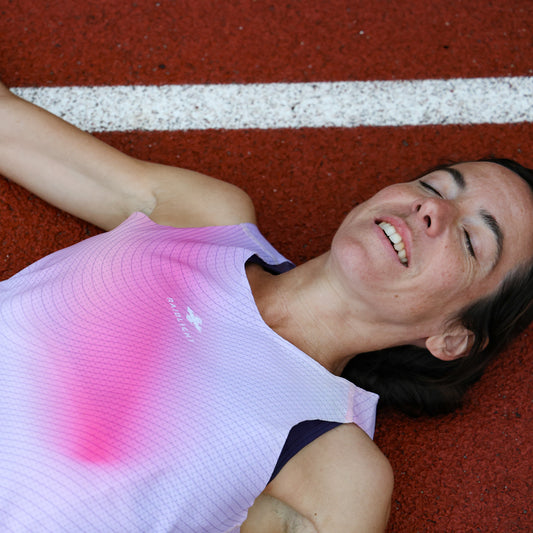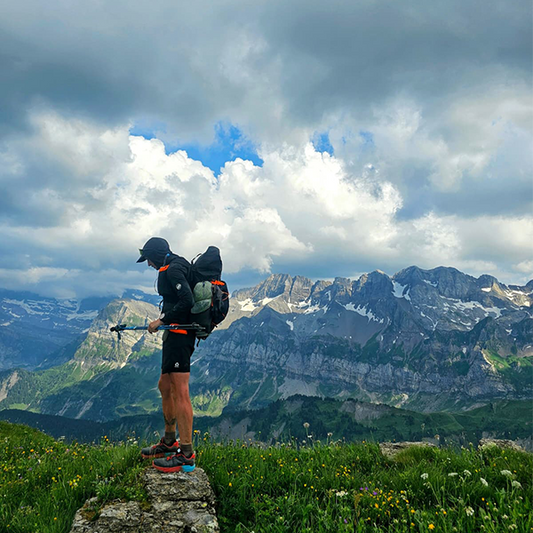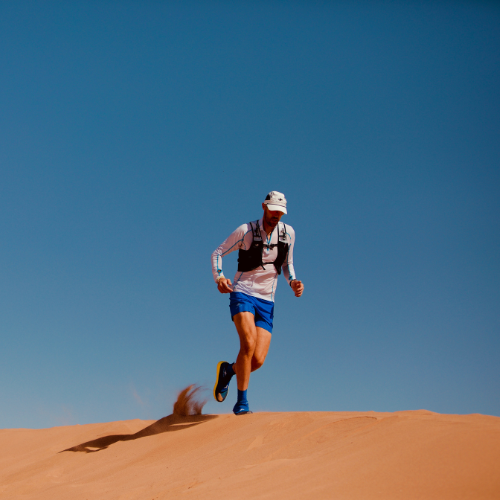The winter period is often an opportunity to work on endurance, weaknesses or technique. Running uphill often seems too difficult or even frightening. We often try to run all the climbs and we explode. To accompany you in this new season, Nicolas Cerisier, Raidlight ambassador, qualified coach in trail running and ultra trail runner, shares with us his advice to progress in climbing and descending.

How to progress in uphill?
Practice makes perfect.
In order to make progress on climbs, gaining altitudes must be an important part of your overall training, even if it means adopting the famous "up & down" or "hamster" session well known to runners who only have small climbs at their disposal.
However, there are other possibilities for progressing uphill, offered in particular by cross-training: here we can mention activities that will work on the strength endurance of the lower limbs. Although this only represents a small proportion of traileurs, we are thinking of course of ski touring which is an excellent activity, cycling in all its forms (road, off-road, home-trainer, elliptical) is also a perfect complement.
In terms of specific training, you can of course do hill splits using the spectrum of different intensity zones, from very short splits of a few seconds to the threshold. Remember to vary the slopes if possible. Climbing a 10% slope requires different qualities than a slope of over 30%.
Those who only have short ribs can add pre-fatigue work based on isometric contraction (e.g. doing the chair against a tree). With experience, this pre-fatigue work can take the form of plyometrics (e.g. jumping squats or jumping lunges). Stair climbing is also an excellent exercise to strengthen muscles and work the cardio. You don't need a technical trail to train on. All you need is a long staircase that you can do over and over again. The descent is just as important as the ascent.
Adapting your pace
Don't try to lengthen your stride and then slow down, but rather take small steps. Every change of pace costs a lot of energy and penalises your endurance. At the foot of a climb, start running slowly and concentrate on your technique. Your heart rate should not increase too much. Also remember to breathe well. Climb at your own pace. This consistency will save you a lot of energy.
Learn to walk efficiently to climb better.
It is better to walk quickly than to run slowly. From 20% slope, the energy cost of walking is more interesting than that of running. To take the example of hill splits, you can split long sets on a very steep hill by... walking! And if possible by walking with trail poles. Because yes, progressing uphill can be achieved by using trail poles (better).
Using your arms to walk fast uphill
Fast walking uphill is very efficient and saves a lot of energy. In steep sections it is as fast as running and much less tiring.
When walking, use your arms to support yourself on your legs. Be careful to put your hands at knee level and not at thigh level.
To counteract the slope, we often tend to lean forward too much when climbing. Don't break your torso, straighten up while remaining balanced. Raising your head will also help you breathe better.
Finally, for city dwellers who are fitness enthusiasts, some cardio machines can simulate climbs in a very interesting way:
How to progress downhill?
As with the climb, you have to do some, but it is more problematic for runners without terrain at their disposal. Contrary to climbing, there is no (or at least very few) cardio equipment that simulates the descent. Furthermore, progressing downhill means "enduring the efforts of the descent". It is therefore a good idea to train regularly in the mountains, to "break the fibre" in order to strengthen yourself in the long term. This is the concept of the "shock weekend" which should be set up a few times a year, well in advance of the main objective.
Strengthening work is essential, even more so than for progressing uphill. But on this point "doing the chair" will not be enough. The muscle fibres of our lower limbs must be accustomed to "resisting stretching" (eccentric contraction). We will therefore make sure to include strengthening work based on eccentrics and plyometrics.
The sheathing is fundamental here: to be effective in descent (and not to hurt yourself), you must be sheathed. And to be sheathed, you have to sheathe. CQFD 😉
Proprioception is also important. I make the link with the mental side of the race: to be good on a descent you have to have confidence in your ankles! The mental barrier is often preponderant in downhill runs. We can do specific work on this point, based on imagery or other techniques. But above all, to progress in downhill running, i.e. to inhibit this barrier, you must have confidence in your body, in the strength of your ankles, in the muscular capacity of your quadriceps and in the support of your whole body (gainage).
Too often neglected, the negative gradient must take an important place in your overall training. Just like D+, don't hesitate to adopt the "hamster" session to get used to the descents and strengthen yourself. Many trail courses are characterised by the ascent of a pass. Downhill work is then often put aside in favour of uphill work, yet it is at this precise moment in the race that you can relax, save yourself and gain time (quite easily). Who has never been overtaken by people running uphill and then overtaken by those same people on the downhill? Who do you think expended the most energy?
As you can see, to progress in climbing and descending you need to do it again and again. The more you practice, the more you will get used to the sensations and the more you will enjoy it! What could be more pleasant than riding up a mountain pass with your legs (and your mind of course) and letting your legs roll downhill?
Nicolas regularly shares with us his experience and his precious advice on training and equipment. Thanks to his many recommendations, you will become a trail expert! You can find Nicolas Cerisier on his website https://www.autourdutrail.com/ or on his social networks under the name Autourdutrail.










